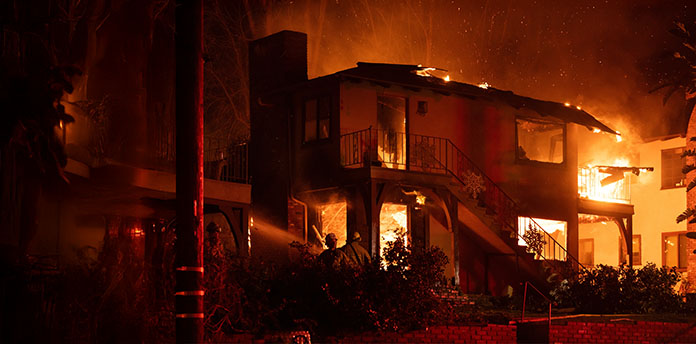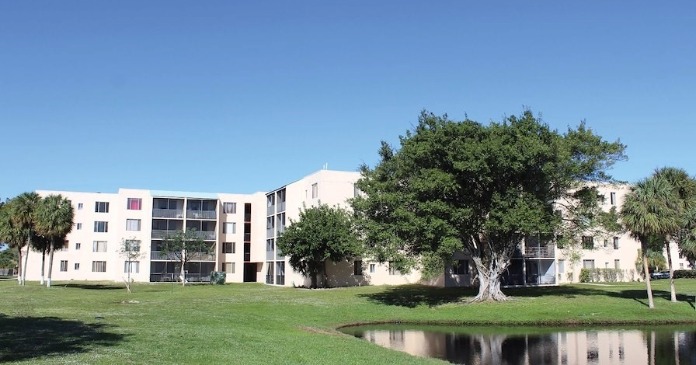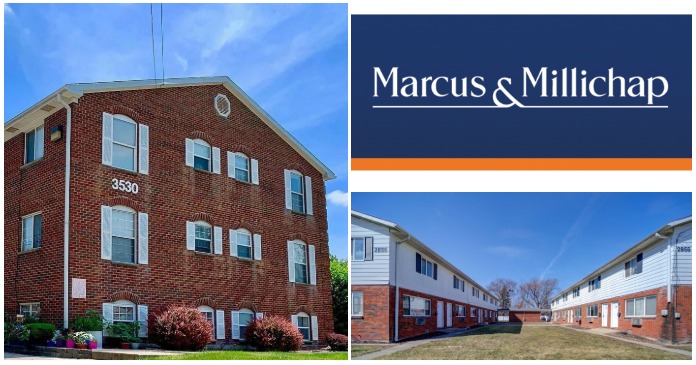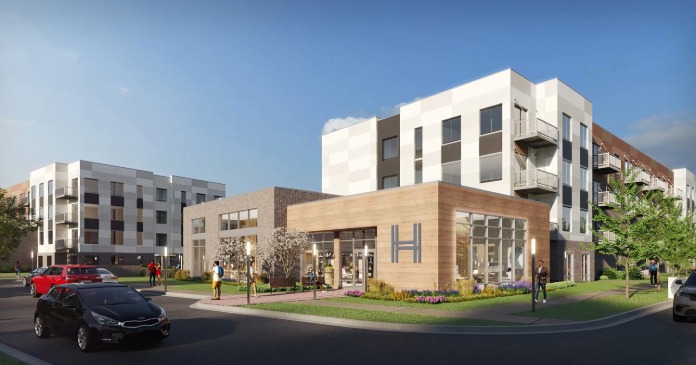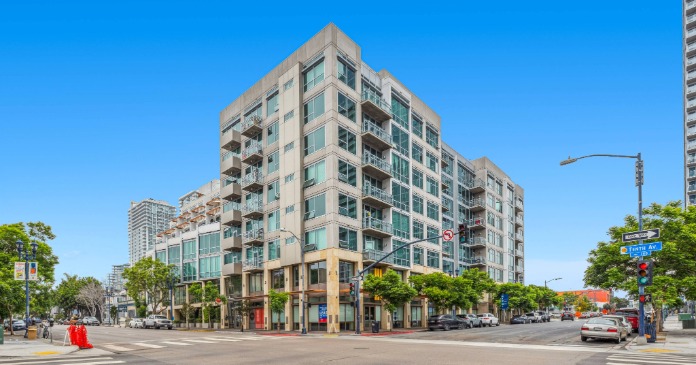For now, the financial programs are in flux, as are the critical building elevations that will dictate which part of New Orleans inundated by Katrina’s tidal surge and subsequent levee beaches will be open for development.
In the meantime, billions of dollars in potential tax credits and grants will attract numerous for-profit and large non-profit groups vying for a slice of the pie to rebuild a devastated apartment market, said Larry Schedler, a broker specializing in the multifamily market.
With an estimated 150,000 rental units in a MSA population (metropolitan statistical areas) of 1.4 million and only 50,000 of those apartments in complexes of 100 units or more, it’s estimated that 20 percent of the units in complexes were destroyed and another 15 percent severely damaged, according to the Tammy Esponge, executive director of the Apartment Association of Greater New Orleans.
And New Orleans is a unique market in that the majority of its single-family housing stock is actually rental property – about 55 percent rentals versus 45 percent ownership. That’s an improvement. In the 1990 census, 60 percent of the city’s single-family homes were rental properties.
But specialists like Wade Ragas of Real Property Associates, a retired professor of finance from the University if New Orleans and former director of UNO’s Real Estate Market Data Center, says that the city’s aversion to high-rise living will have to change as the realities of the changing footprint of the city strike home. Nearly 7,000 of the apartments in large complexes were located in eastern New Orleans and the majority of the units were submerged under as much as 10 feet of water. The bulk of that inventory was the area’s affordable market and was also where the majority of Section 8 certificates were located.
Most of the city’s apartment market, a perplexing number for specialists to figure out, are the thousands of units carved out of the Big Easy’s housing stock. New Orleans is believed to have the oldest housing stock in the nation, with thousands of 19th century homes.
Close to 200,000 homes were destroyed or heavily damaged in New Orleans alone by the storm, but estimates on how many of those were rental properties in single-family homes are unavailable.
There is a dearth of traditional high-rise complexes in the historic core of the city and proposals for high-rise construction near the Garden District or other Uptown areas have been vigorously opposed. That’s also true for high-rise construction along Lake Pontchartrain, the Mississippi River, and Canal Street, the unofficial boundary between the French Quarter and the Central Business District.
The closest to traditional complexes are anything but traditional. About 2,000 units exist in the Warehouse District, dozens of giant low-rise 19th century warehouses that have been converted to nearly 2,000 apartments, now mostly undergoing a rapid condo-conversion phase. Nearly all of the conversions relied on historic tax credits administered by the U.S. Department of Interior, which provides 20 percent of a project’s renovation cost as tax credits.
But billions of new tax incentives and grants are expected to pour into Louisiana, particularly in the mixed-income sector, and Katrina has created as many opportunities for developers as units destroyed. For example, the Louisiana Housing Finance Agency (LHFA), which normally receives about $8 billion in Low Income Housing Tax Credits each year, has received an additional $56 million under the Gulf Opportunity Zone Act and assurances of $65 million again in 2006 and 2007. Mark Madderra, an investment banker and board member of LHFA, said that the tax credits should spur nearly $2 billion in construction. That, LHFA officials say, combined with $1.75 billion being sought by the Louisiana Recovery Authority from Congress, in the form of Community Development Block Grants, could help build 20,000 apartments, the LRA announced in late March.
Further, the Archdiocese of New Orleans will announce in mid-April that it will either restore or build 7,000 affordable rental units in the city, including several thousand single-family residences, according to Jim Kelley, executive director of the Archdiocese of New Orleans Charities.
But until new flood maps from the Army Corps of Engineers are released, speculators, land developers, investors, tax credit buyers and tenants won’t have a clear picture as to where replacement units will be affordable to be built, what building code changes will be allowed and how the projects will be financed and insured.
Developers and politicians are listening to nearly every community planning expert imaginable, including experts from the American Planning Association, the American Institute of Architects, Urban Land Institute and National Association of Home Builders.
In a city that lags in high-rise multifamily development compared to most metropolitan areas, experts say rebuilding will require politicians and neighborhoods to accept high-rise concepts, according to Madderra. Madderra and Schedler, a broker specializing in the multifamily market, jointly publish a biannual New Orleans multifamily report.
Hixon Development Inc, a partnership led by Neal Hixon, is moving forward with a $20 million, 220-foot tall condo project. The project, while condo and not rental, will be a true test between the New Orleans City Planning Commission, City Council, Mayor Nagin and his rebuilding committee; High-rise development has always been controversial when abutting elements of the 300 year old city.
While Hixon’s condo projects and others answer immediate housing needs, they put pressure to raise apartment rental rates as the stock diminishes. To date, nearly every project announced or re-confirmed post Katrina have been condo deals, including a proposal by Florida developers to partner with Donald Trump of the Trump Organization to create a condo tower on Poydras Street that would rise 750 feet, becoming the city’s tallest building.
The continuing conversion of apartments put pressure on rental rates before Katrina and is exacerbating the situation post Katrina, according to Shawn Talbot of the Talbot Realty Group. Talbot specializes in the condo market. And any project that proposed rising above the 85-foot height limit that lines most historic areas has run into organized opposition.
Regardless, before the Congressional committees and television cameras, top Louisiana officials have been telling the holders of federal purse strings that repairing levees to ensure investor confidence and tax incentives and grants for multifamily is a top priority to getting the city tourism economy chugging and the city itself rebuilt.
That’s the word from New Orleans Mayor Ray C. Nagin, Gov. Kathleen Blanco, representatives of the Louisiana Recovery Authority (LRA), and the state’s congressional delegation and legislature.
From families eager to rent while they repair their single-family homes to construction workers tired of dormitory conditions or hotel rooms to hard-core relief workers sleeping in tents, apartments are the quickest way to house them in structures safer than FEMA travel trailers. That has been made clear by Steve Reilly of the LRA and Gov. Blanco. The decision on how much money Louisiana will receive has not been reached.
Meanwhile, rents soar. In a relatively sleepy market that posted annual 3 percent rental growth with occupancy consistently in the mid-90-percent rent range have climbed between 10 to 15 percent post Katrina according to Larry Schedler, of Larry G. Schedler & Associates.
The hikes will cover landlord insurance costs, which local broker Schedler says have nearly doubled already, while landlords’ bicker with insurance companies and building material prices rise.
With 40 percent of the market off-line, the diaspora of New Orleanians continues. Politicians from Mayor Nagin and Louisiana Gov. Kathleen Blanco believe that creating incentives and restoring the Big Easy’s tourism economy hinges on rapidly rebuilding the multifamily market.
Further pressure of demand doesn’t take much math. With an estimated 200,000 homes either destroyed or damaged in New Orleans alone, households have no means of returning to the city from their evacuation circumstances.
Many do predict a spike in demand for single-family housing and apartments — meaning more demand on apartments — in August when evacuated households with children return to New Orleans because schools are finally opening, Schedler said.
Author: GREG THOMAS




